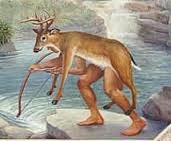From: George Wuerthner ;gwuerthner@gmail.com
Date: February 15, 2015 at 10:12:52 AM PST
To: "Meril, Rick" ;Rick.Meril@warnerbros.com;
Subject: Wildlife Abundance
Rick
I think the Ripple paper is accurate in a broad sweeping way, but it and others like it may still give the wrong impression about wildlife abundance. I have read many, many, many, early historical accounts of wildlife in the West and elsewhere. I think the impact of Native Americans on wildlife, particularly prior to the horse, was localized--in much the same way that wolf impacts are localized. And like wolf packs there are buffers as they mention in their piece where there is less killing of wildlife.
Think about the problem of transport back prior to the horse. Do you backpack a bison kill back to a camp 50 miles away? Of course not. You don't hunt 50 miles away from the village because you couldn't possibly use the kill.But places where there were alternative "prey" like the Columbia River supported dense populations of Indians and there was likely more hunting pressure.
On the other hand, Lewis and Clark did kill elk while camped on the coast, but one has to be careful about drawing conclusions and comparing wildlife on the coast with other regions. First of all Lewis and Clark did not hunt elk that much even on the plains because they could kill bison. And if you have ever hunted in the coastal forests, your visibility is significantly reduced. You could be 100 yards from an elk and never know it, but on the open terrain of the plains you could see animals miles awayYou also have to keep in mind season of travel. Depending on where one might be, you might see or not see wildlife. For instance, I am in the process of reading Raynold's 1858 journal of travels to the headwaters of the Yellowstone. for the first 300 miles of their journey across South Dakota, they did not see a single bison. Then they got to the Black Hills and suddenly they saw many herds. Why? Well they were commenting on how dry the plains were due to drought. The bison had moved to the Black Hills because they were higher, moister and had grass. Had you just read or cited the first part of Raynold's journel, and especially if you did not account for the drought, you would be concluding Indians must have killed off the bison.
Finally back to Lewis and Clark. Citing the lack of game they killed while encamped on the coast has other explanations that must be considered. It was winter with short days and rainy weather. Just not the kind of weather for hunting. So effort was reduced.So I caution drawing too many conclusions just from the Lewis and Clark journals. I did an analysis of all the journals I could find for Oregon prior to the opening o fthe Oregon Trail in 1841 and there are conflicting accounts of both abundance and lack of game.












No comments:
Post a Comment